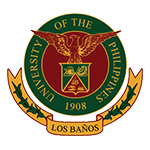Climate change will threaten food security if the country fails to manage water use efficiently, William Dar, president of the InangLupa Movement Inc., warned on Thursday.
Dar said most countries, including the Philippines, can expect reduced crop yields by 2050 and the only way to avoid this is for the country to come up with methods to maximize the use of water resources and develop high value crops.
Speaking during the forum on the “Effects of Climate Change on Food and Water sustainability” Dar noted that food security is directly related to water availability.
The conference was organized by the Center for Philippine Futuristics Studies and Management Center in partnership with The Manila Times and the Lyceum of the Philippines University (LPU).
InangLupa is a social movement working for a science-based climate smart and competitive Philippine agriculture for social and economic empowerment of smallholder farmers.
According to Dar, water supply in the country is severely affected by climate variability.
He said decreasing rainfall, severe crop water stress and significant yield reduction brought by prolonged dry spells due to El Niño events have been occurring more frequently.
“These are exacerbated by the frequent occurrence of above normal rainfall leading to floods and crop losses,” he said.
The Philippines, based on The World Risk Index 2016, ranks third on the list of countries most at risk of disasters.
Dar said that by 2025, the country’s water demand will be 85,401 million cubic meters (mcm) but available supply is estimated at 60,586 mcm.
To avoid lower crop yield, the government needs to manage the use of water more efficiently, develop and plant more high-value crops needing less water and tap resources from surface and ground water, Dar said.
It is also important to develop climate-smart commodities and technologies in agriculture that would lessen the impact of the extreme weather events brought by climate change.
Among the innovative climate smart agriculture solutions are drought mapping to identify hotspots of higher climatic risk and aid planning, implementation of a more effective water-resource infrastructure through systematic construction of infrastructure for surface irrigation and aquifer replenishment, increased nutrient and water productivity through improved agronomic practices, strengthening water users’ groups to promote more effective farmer management of resources through farmer to farmer water sharing, and promotion of agricultural diversification with market-oriented crops that are suitable for the different drought risk conditions.
Dar also raised the need to improve the management of watershed and agroforestry areas and develop an integrated systems master plan for coping with the water-related problems in each of the provinces and in the region as a whole.
Falino Lansigan, dean of the college of arts and science at UPLB, meanwhile cited some issues and challenges like inadequate national agricultural extension programs and mainstreaming and sustainability of climate adaptation initiatives.
There is also the need for effective coordination and governance among agencies involved, including training programs and extension activities, among others.
“Climate change is now a reality. Climate mitigation and adaptation options and measures are needed including soil and water management,” Lansigan said.









